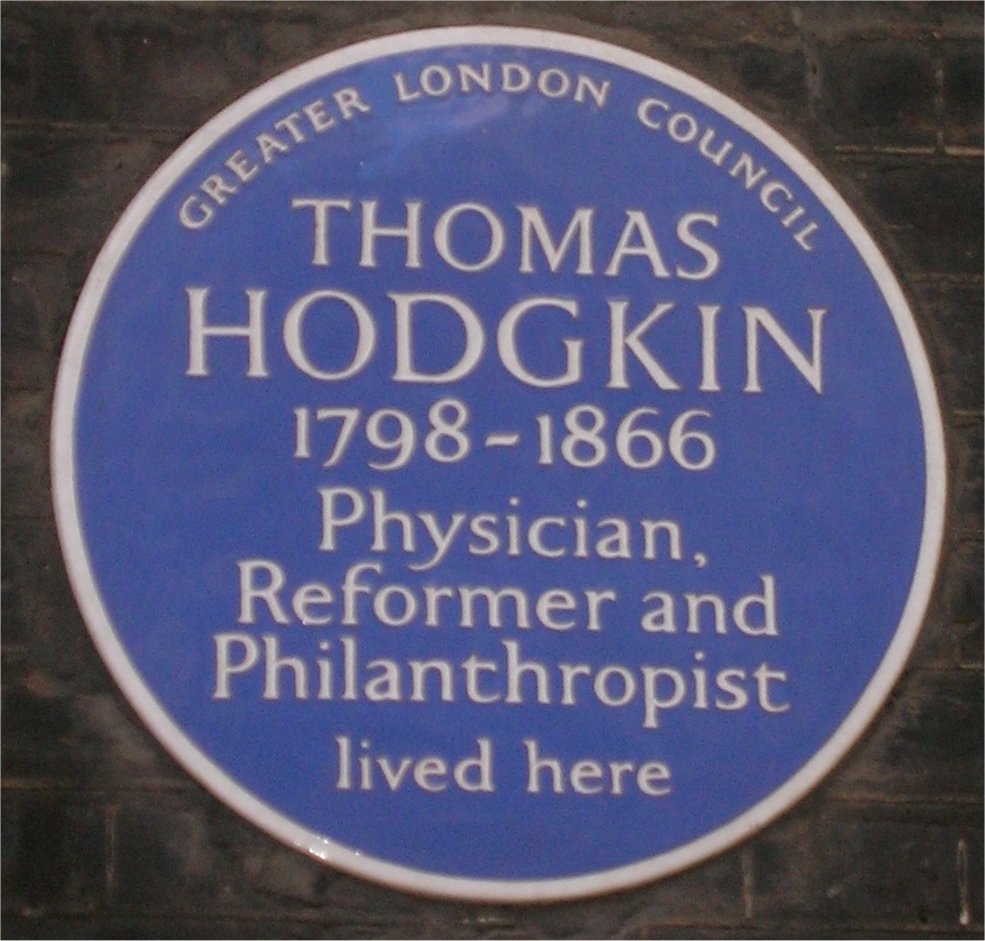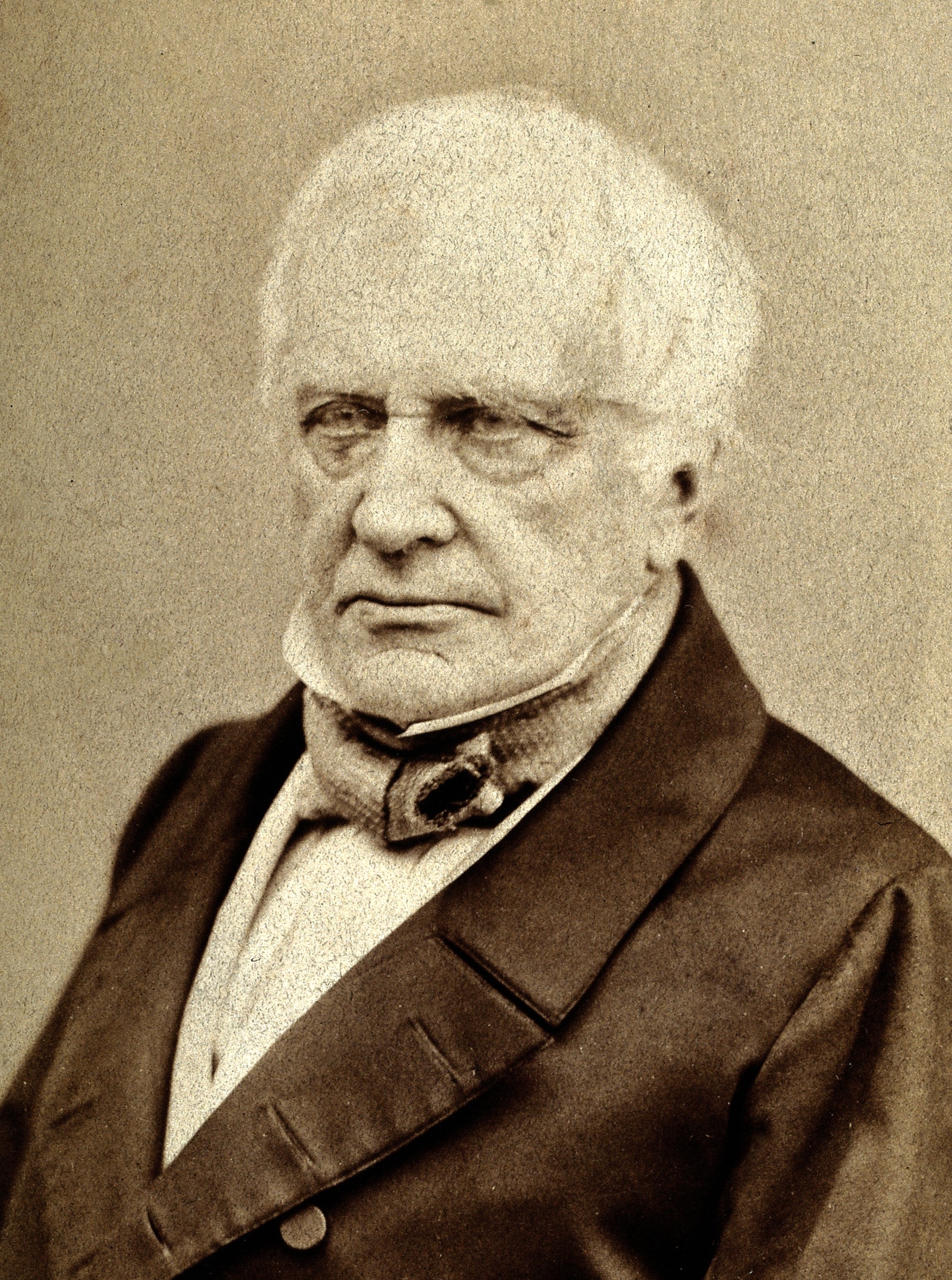|
Aldersgate Street School Of Medicine
The Aldersgate Medical School was a medical school in east London, in existence from about 1825 to 1848. One of many private medical schools of the period, it had popular lecturers on its staff, and proved a serious rival to St. Bartholomew's Hospital as a teaching institution. Foundation The Aldersgate School was set up in 1825 by Frederick Tyrrell; the founding group included William Lawrence, William Coulson and others. At that point the shared medical school of Guy's Hospital and St. Thomas's Hospital was divided. Tyrrell lectured at the Aldersgate School, but later took a position at St. Thomas's, and was no longer involved with the Aldersgate school. Lawrence was also an early supporter of the school, lecturing on surgery in 1826–7; but he withdrew after taking a position at St. Bartholomew's Hospital. Lawrence was a reformer, and the background was his opposition to an 1824 regulation of the Royal College of Surgeons aiming to limit the number of medical schools that a sur ... [...More Info...] [...Related Items...] OR: [Wikipedia] [Google] [Baidu] |
Frederick Tyrrell
Frederick Tyrrell or Tyrell (1793–1843) was an English surgeon. Tyrrell was assistant surgeon at the London Eye Infirmary in 1820, and Lecturer in anatomy and surgeon to St Thomas's Hospital in 1822. He became Arris & Gale lecturer. He published ''Diseases of the eye'' (1840).''Concise Dictionary of National Biography'': volume 1 to 1900. Oxford University Press. p. 1325 A nephew of Sir Astley Cooper, Tyrrell was one of Thomas Wakley Thomas Wakley (11 July 179516 May 1862) was an English surgeon. He gained fame as a social reformer who campaigned against incompetence, privilege and nepotism. He was the founding editor of ''The Lancet'', a radical Member of Parliament (MP) a ...'s 'Three Ninnyhammers' and was co-proprietor of the Aldersgate Private Medical Academy (founded 1825) with William Lawrence. References {{DEFAULTSORT:Tyrrell, Frederick 1793 births 1843 deaths English surgeons ... [...More Info...] [...Related Items...] OR: [Wikipedia] [Google] [Baidu] |
Frederic Carpenter Skey
Frederic Carpenter Skey FRS (1 December 1798 – 15 August 1872) was an English surgeon. The Royal College of Surgeons of England Life He was the second of six children of George Skey, a Russian merchant in London, and was born at on 1 December 1798. He was educated chiefly at the private school of Michael Maurice, father of , whose friendship he retained until his death. After a short stay at Plymouth with his cousin, Dr. Joseph Skey, then inspector ...[...More Info...] [...Related Items...] OR: [Wikipedia] [Google] [Baidu] |
James Paget
Sir James Paget, 1st Baronet FRS HFRSE (11 January 1814 – 30 December 1899) (, rhymes with "gadget") was an English surgeon and pathologist who is best remembered for naming Paget's disease and who is considered, together with Rudolf Virchow, as one of the founders of scientific medical pathology. His famous works included ''Lectures on Tumours'' (1851) and ''Lectures on Surgical Pathology'' (1853). There are several medical conditions which were described by, and later named after, Paget: * Paget's disease of bone * Paget's disease of the nipple (a form of intraductal breast cancer spreading into the skin around the nipple) ** Extramammary Paget's disease refers to a group of similar, more rare skin lesions discovered by Radcliffe Crocker in 1889 which affect the male and female genitalia. * Paget–Schroetter disease * Paget's abscess, an abscess that recurs at the site of a former abscess which had resolved. Life Paget was born in Great Yarmouth, England, on 11 January ... [...More Info...] [...Related Items...] OR: [Wikipedia] [Google] [Baidu] |
Thomas Hodgkin
Thomas Hodgkin RMS (17 August 1798 – 5 April 1866) was a British physician, considered one of the most prominent pathologists of his time and a pioneer in preventive medicine. He is now best known for the first account of Hodgkin's disease, a form of lymphoma and blood disease, in 1832. Hodgkin's work marked the beginning of times when a pathologist was actively involved in the clinical process. He was a contemporary of Thomas Addison and Richard Bright at Guy's Hospital in London. Early life Thomas Hodgkin was born to a Quaker family in Pentonville, St. James Parish, Middlesex, the son of John Hodgkin. He received private education with his brother John Hodgkin, and in 1816 took a position as private secretary to William Allen. His aim was to learn the trade of apothecary, one of the routes into medicine, and Allen, despite prominence in that business, did not make it possible. They parted, and Hodgkin went to an apothecary cousin, John Glaisyer, in Brighton instead. ... [...More Info...] [...Related Items...] OR: [Wikipedia] [Google] [Baidu] |
Robert Edmond Grant
Robert Edmond Grant Doctor of Medicine, MD Royal College of Physicians of Edinburgh, FRCPEd Fellow of the Royal Society, FRS FRSE Zoological Society of London, FZS Geological Society of London, FGS (11 November 1793 – 23 August 1874) was a British anatomist and zoologist. Life Grant was born at Argyll Square in Edinburgh (demolished to create Chambers Street), the son of Alexander Grant WS, and his wife, Jane Edmond. He was educated at the High School in Edinburgh then studied Medicine at Edinburgh University. Having obtained his MD at Edinburgh in 1814, Grant gave up medical practice in favour of marine biology and the zoology of invertebrates, living on a legacy from his father. As a materialist and Freethought, freethinker, and politically Radicalism (historical), radical, he was open to ideas in biology that were considered subversive in the climate of opinion prevailing in Britain after the Napoleonic Wars. He cited Erasmus Darwin's ''Zoönomia'' in his doctoral dissertat ... [...More Info...] [...Related Items...] OR: [Wikipedia] [Google] [Baidu] |
Jonathan Pereira
Jonathan Pereira FRS (22 May 1804, in London – 20 January 1853) was a pharmacologist, author of the ''Elements of Materia Medica'', a standard work. He was examiner on the subject in the University of London. Life Pereira graduated as apothecary in 1823 after studying at the Aldersgate General Dispensary and St Bartholomew's Hospital. In 1826 he became lecturer on chemistry at the Royal College of Surgeons and in 1832 he was an established physician in London, being appointed professor of materia medica and lecturer in chemistry at the Aldersgate Medical School. In 1839 he became professor and lecturer at the London Hospital, where he received the position of assistant physician in 1841. Jonathan Pereira delivered the introductory lectures on Materia Medica in 1842 at the Pharmaceutical Society and one year later he was appointed as Professor of Materia Medica by this institution, examining the subject in the School of Pharmacy of the University of London. His subject area w ... [...More Info...] [...Related Items...] OR: [Wikipedia] [Google] [Baidu] |
James Hope (physician)
James Hope (1801–1841) was an English physician. He has been called "the first cardiologist in the modern sense". He is known for discovering the early diastolic murmur of mitral stenosis in 1829. Life He was born at Stockport in Cheshire 23 February 1801, the son of Thomas Hope, merchant and manufacturer, he of Prestbury Hall near Macclesfield. After four years (1815–18) at Macclesfield grammar school, James resided for about 18 months at Oxford, where his elder brother was then an undergraduate, but never became a member of the university. In October 1820 Hope went as a medical student to Edinburgh University, where he studied for five years. The subject of his inaugural medical dissertation (August 1825) was aneurysm of the aorta, and he then began a collection of drawings of pathological specimens coming under his notice. A president of the Royal Medical Society of Edinburgh, he held the posts of house-physician and house-surgeon at the Edinburgh Royal Infirmary. Leavi ... [...More Info...] [...Related Items...] OR: [Wikipedia] [Google] [Baidu] |
James Wardrop
Dr James Wardrop or Wardrope FRSE FRCSEd FRCS (1782–1869) was a Scottish surgeon and ophthalmologist. Life Wardrop was born on 14 August 1782, the youngest son of James Wardrop (1738-1830) and his wife, Marjory Marjoribanks, at Torbane Hill, near Linlithgow, West Lothian, but at four years of age moved with the family to live in Edinburgh where he attended the High School, and then St Andrews University. In 1800 he was apprenticed to a firm of surgeon apothecaries which included his great uncle Andrew Wardrop, former president of the Royal College of Surgeons of Edinburgh, and in 1801 was appointed House Surgeon at Edinburgh Royal Infirmary. He trained in London (1801), Paris and Vienna (1803). He was admitted a Fellow of the Royal College of Surgeons of Edinburgh in 1804. He worked as an ophthalmic surgeon in Edinburgh 1804–08 and was elected a Fellow of the Royal Society of Edinburgh in 1808, upon the proposal of Andrew Wardrop, Alexander Keith of Dunnottar and James R ... [...More Info...] [...Related Items...] OR: [Wikipedia] [Google] [Baidu] |
Sir William Lawrence
Sir William Lawrence, 1st Baronet (16 July 1783 – 5 July 1867) was an English surgeon who became President of the Royal College of Surgeons of London and Serjeant Surgeon to the Queen. In his mid-thirties, he published two books of his lectures which contained pre-Darwinian ideas on man's nature and, effectively, on evolution. He was forced to withdraw the second (1819) book after fierce criticism; the Lord Chancellor ruled it blasphemous. Lawrence's transition to respectability occurred gradually, and his surgical career was highly successful. In 1822, Lawrence was elected a member of the American Philosophical Society in Philadelphia. Lawrence had a long and successful career as a surgeon. He reached the top of his profession, and just before his death the Queen rewarded him with a baronetcy (see Lawrence baronets) shortly before his death in 1867. Early life and education Lawrence was born in Cirencester, Gloucestershire, the son of William Lawrence, the town's chief ... [...More Info...] [...Related Items...] OR: [Wikipedia] [Google] [Baidu] |
Peter Roget
Peter Mark Roget ( ; 18 January 1779 – 12 September 1869) was a British physician, natural theologian, lexicographer and founding secretary of The Portico Library. He is best known for publishing, in 1852, the '' Thesaurus of English Words and Phrases'', a classified collection of related words. He also read a paper to the Royal Society about a peculiar optical illusion in 1824, which is often regarded as the origin of the persistence of vision theory that was later commonly used to explain apparent motion in film and animation. Early life Peter Mark Roget was born in Broad Street, Soho, London, the son of Jean (John) Roget (1751–1783), a Genevan cleric, and his wife, Catherine Romilly, sister of Samuel Romilly. After his father's death the family moved to Edinburgh in 1783 and he shortly began to study medicine at the University of Edinburgh, graduating in 1798. Samuel Romilly, who had supported his education, also introduced Roget into Whig social circles. Roget th ... [...More Info...] [...Related Items...] OR: [Wikipedia] [Google] [Baidu] |
Henry Clutterbuck
Henry Clutterbuck M.D. (1767–1856) was an English medical writer. Life Clutterbuck was the fifth child of Thomas Clutterbuck, attorney, who died at Marazion in Cornwall 6 November 1781, by his wife, Mary, a daughter of Christopher Masterman, merchant, Truro. He was born at Marazion, 28 January 1767, and commenced the study of medicine by an apprenticeship to James Kempe, a surgeon at Truro, and at the age of twenty-one came to London, when he entered the United Borough Hospitals. On 7 August. 1790 he passed as a member of the College of Surgeons, and settled as a general practitioner at Walbrook in the City of London. Five years later he began publication of ''The Medical and Chirurgical Review,'' a journal which appeared twice each month, of which he was the projector, editor, and almost sole writer, and which he continued until 1807. Determining to qualify as a physician, he, in 1802, proceeded to Edinburgh for one year, but then transferred himself to Glasgow, where he gra ... [...More Info...] [...Related Items...] OR: [Wikipedia] [Google] [Baidu] |








